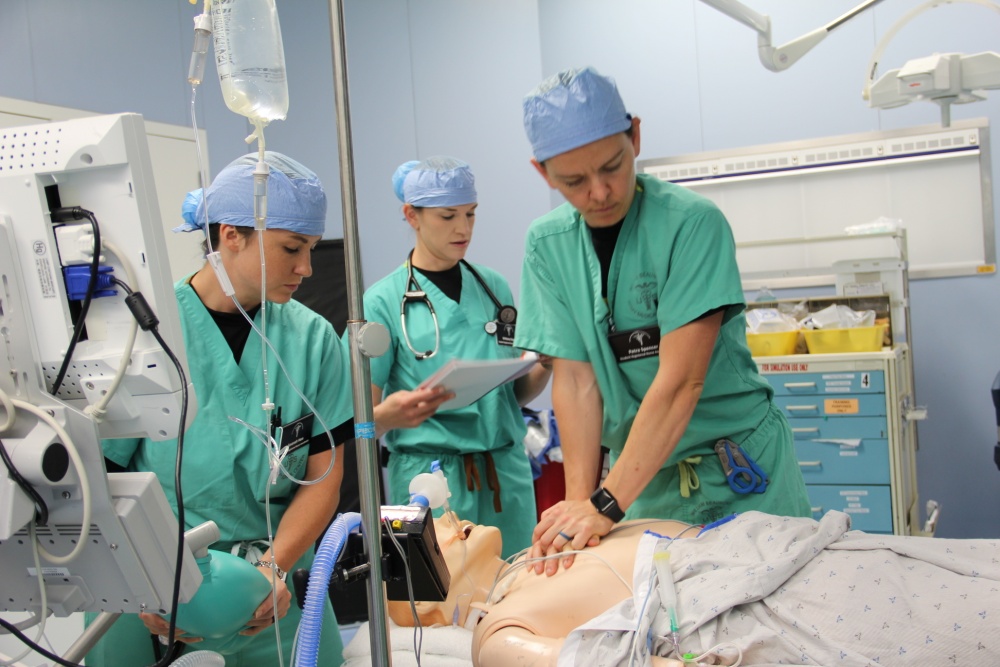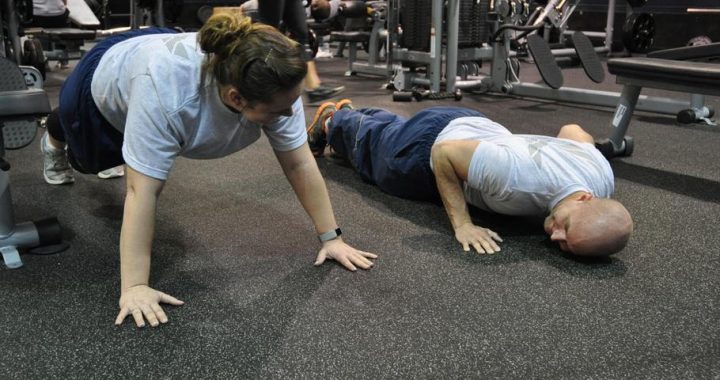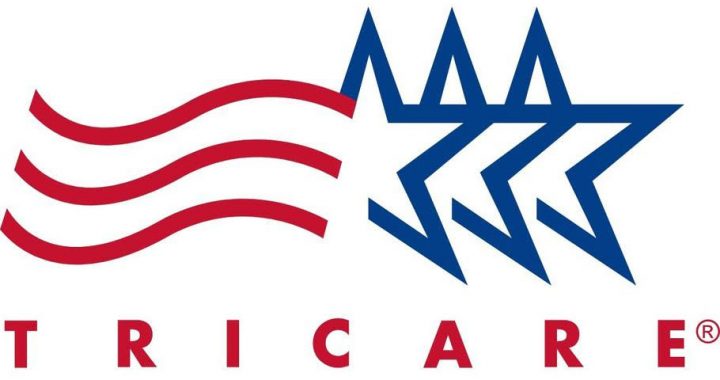WBAMC Simulation Center Conducts Training for Nurse Anesthesia Students
3 min read
FORT BLISS, TX, UNITED STATES
Story by Amabilia Payen
William Beaumont Army Medical Center
FORT BLISS, Texas – Student registered nurse anesthetists at William Beaumont Army Medical Center received hands-on training on emergent operating room scenarios conducted by the hospital’s simulation center staff, August 2, 2019, in the El Paso Veterans Affairs Healthcare System surgical room.
The simulation staff used ‘Jeff’ who is a robotic dummy with high-fidelity simulation technology that displays the same vital signs that a real patient would. Jeff can be manipulated by the training staff to change his vital signs on the fly, thus changing the conditions of the surgical scenario. Jeff is commonly used to simulate low or high intensity scenario-based events that are common in the operating room, affording the students an opportunity to use their trained skills in a controlled environment.
The goal was to ensure nurse anesthesia students had the knowledge and experience to save patient lives by becoming comfortable in using a step-by-step method.
“(Nurse) Anesthesia (students) will end up encountering some type of action that they have to do to address a critical situation in the patient’s status while in the operating room,” said Thomas Soto, administrator for WBAMC’s simulation center. “For example, they may encounter a difficult situation where there is something wrong with the patient’s airway and they will have to do the right interventions.”
The EPVAHS graciously let the WBAMC staff borrow their surgical room for the day to do the simulated training.
Five nurse anesthesia students, all active duty officers, walked in, ready to take on the challenges that the simulation team had ready for them.
After receiving a quick in-brief and being introduced to Jeff, the team began hooking him up to all the monitors normally used in an operating room.
Capt. Petra Spencer volunteered to be the first team leader for the first simulated exercise and began to put Jeff to sleep to be ready for surgery. Suddenly, he had a drop in blood pressure and the monitors showed abnormal heart rates. After not getting a pulse, the student team jumped into action and began resuscitative procedures. The team started out slow, but then picked up the pace after encouragement from the simulation staff. When the exercise was over, each student understood what to do better for the next scenario.
More emergent scenarios were used for each remaining exercise during which each team member took turns calling the shots. Overall, it turned out to be a great experience, especially for Spencer who has encountered similar, real-life situations in the intensive care unit.
“In the real thing, there is a lot more adrenalin going and you get a flood of people,” said Spencer. “Doing that in an environment with my peers helps me learn from my mistakes because we help each other,” said Spencer. “At the end of our clinical days, we talk about what we did and share our lessons learned, and we pass on our experience. It’s very helpful in a simulated environment to work together.”
Spencer is thankful for the simulation staff and the training they provide.
The WBAMC simulation center is located in the main hospital, but the staff have the capability to move to other locations and give training if necessary.





